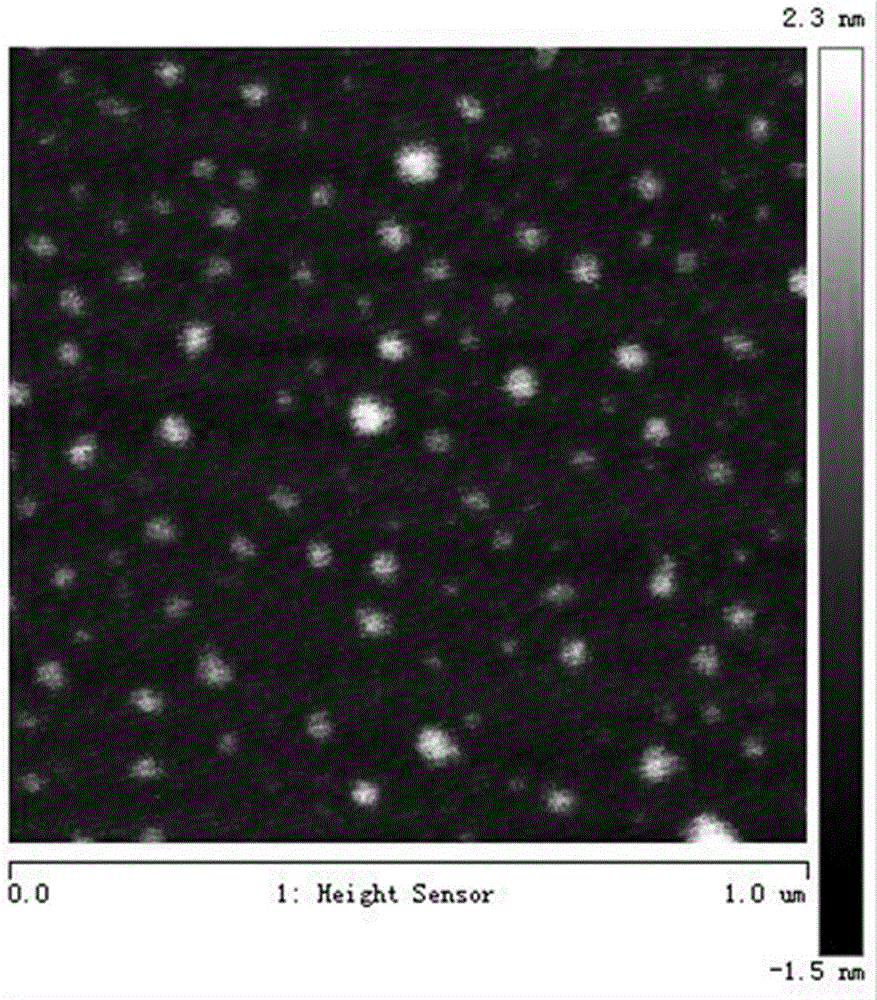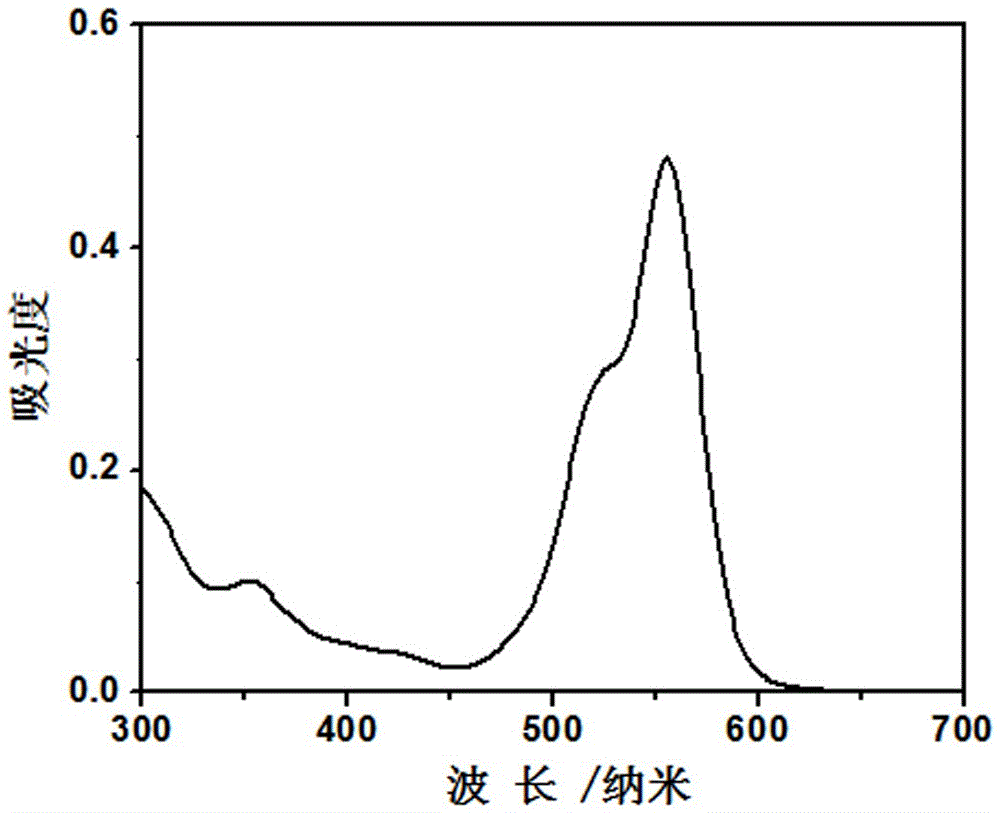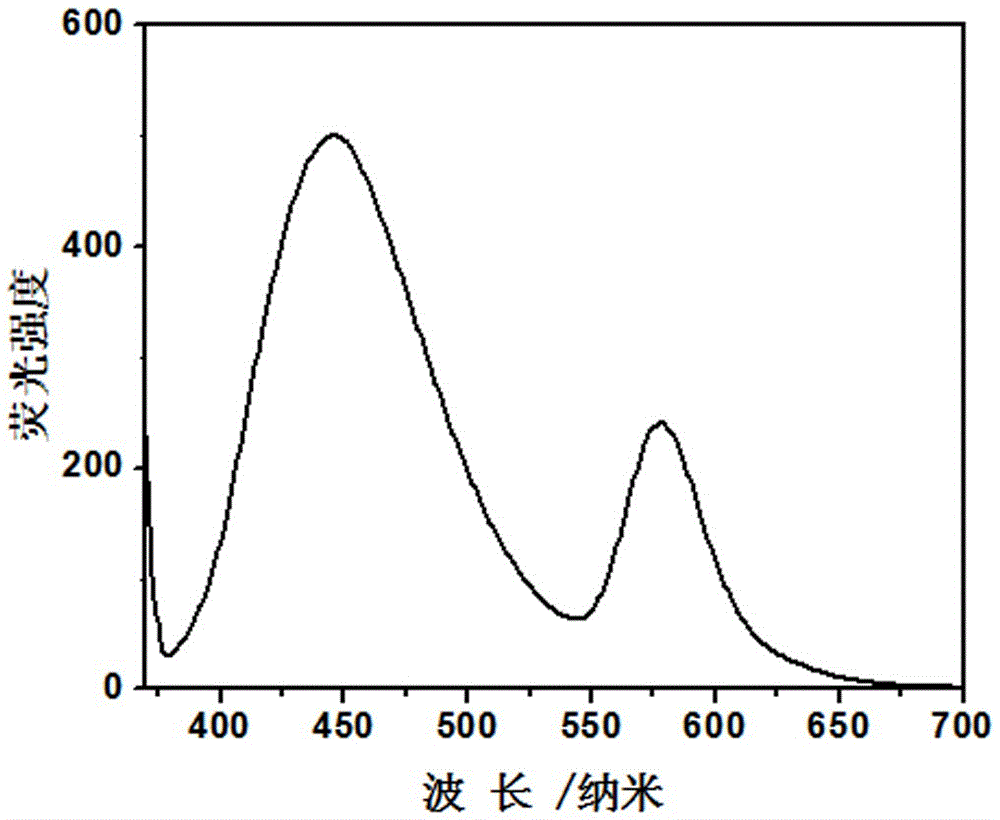Fluorescence silicon nanoparticle-based ratio type temperature sensor, and preparation method and application thereof
A silicon nanoparticle, temperature sensor technology, applied in chemical instruments and methods, thermometers with physical/chemical changes, thermometers, etc., can solve problems such as narrow suitable temperature range, harsh test conditions, and large cell damage, and achieve good response. low cost, good biocompatibility
- Summary
- Abstract
- Description
- Claims
- Application Information
AI Technical Summary
Problems solved by technology
Method used
Image
Examples
Embodiment 1
[0029] The preparation method of fluorescent silicon nanoparticles, the specific steps are as follows:
[0030] (1) Make a certain quality of trisodium citrate into an aqueous solution, and under the protection of nitrogen, inject APTES 8 to 9 times the mass of trisodium citrate into the above solution, react for 30 minutes, and then transfer the mixed solution to water Seal the heat reaction kettle and place it in an oven at 160°C for 5 hours;
[0031] (2) Dialyze the solution obtained in step (1) in deionized water for 4 times (change the water every 6 hours), and the molecular weight cut-off of the dialysis bag is 500Da, thereby preparing a blue fluorescent silicon nanoparticle aqueous solution, Adjust its concentration to 10mg / mL.
Embodiment 2
[0033] (1) Take 10mL of the aqueous solution of fluorescent silicon nanoparticles prepared in Example 1 in 3 flasks, numbered S1, S2, and S3, and then add 2.5 / 5.0 / 10.0mg of rhodamine B isothiocyanate in turn and fully Dissolve, and then use 0.1mol / L NaOH aqueous solution to adjust the pH of the mixed solution to weak alkaline (pH is about 8~9), and then stir and react in the dark for 48 hours.
[0034] (2) The solution after the reaction was dialyzed in water 4 times (change the water every 6 hours), and the molecular weight cut-off of the dialysis bag was 500Da, thus obtaining a ratiometric temperature sensor based on fluorescent silicon nanoparticles, with an average particle size of 2~ 3nm, such as figure 1 shown.
Embodiment 3
[0035] Example 3: Spectral properties of ratiometric temperature sensors
[0036] Get the S2 sample 100 μ L of embodiment 2 in the cuvette of 5 mL, dilute to 3 mL with deionized water, then test its ultraviolet-visible absorption spectrum, see figure 2 , there are two characteristic absorption peaks in the absorption spectrum, which are 350nm and 556nm respectively, which shows that the silicon nanoparticles and rhodamine B isothiocyanate are successfully combined together; then the fluorescence spectrum is measured with 360nm as the excitation wavelength, See image 3 , the test results show that the temperature sensor sample has fluorescence emission peaks at 445nm and 576nm.
PUM
| Property | Measurement | Unit |
|---|---|---|
| particle size | aaaaa | aaaaa |
Abstract
Description
Claims
Application Information
 Login to View More
Login to View More - R&D
- Intellectual Property
- Life Sciences
- Materials
- Tech Scout
- Unparalleled Data Quality
- Higher Quality Content
- 60% Fewer Hallucinations
Browse by: Latest US Patents, China's latest patents, Technical Efficacy Thesaurus, Application Domain, Technology Topic, Popular Technical Reports.
© 2025 PatSnap. All rights reserved.Legal|Privacy policy|Modern Slavery Act Transparency Statement|Sitemap|About US| Contact US: help@patsnap.com



